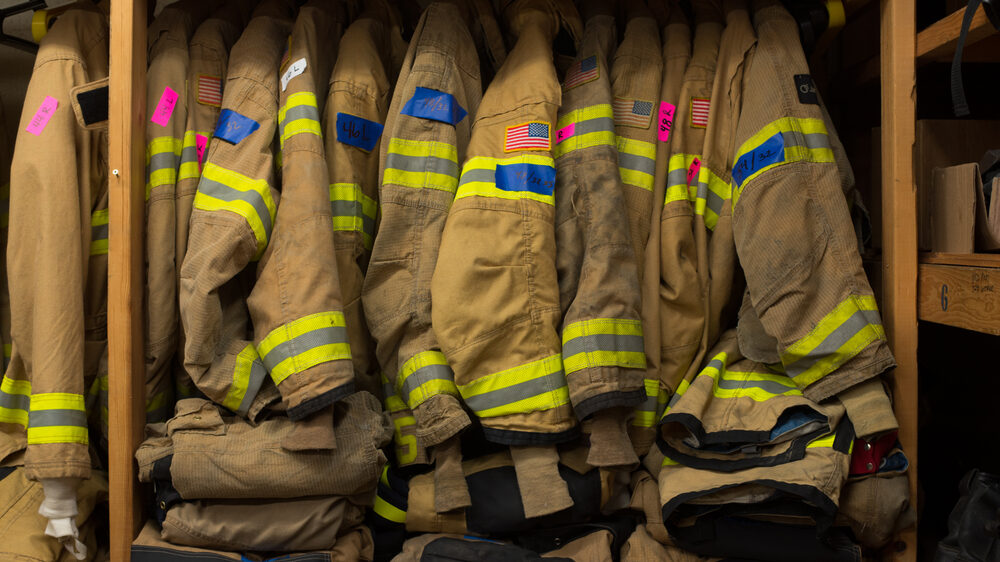Firefighters in Connecticut confront risks of PFAS in protective gear
- March 5, 2024
- 8:00 am


Iain Hoey
Share this content
Firefighters Exposed to Harmful Chemicals in Gear
Recent findings reveal that firefighters’ turnout gear, essential for their safety, contains perfluoroalkyl and polyfluoroalkyl substances (PFAS).
These chemicals, present in various products, are known for their persistence in the environment and potential health risks.
Kevin McKie of the Environmental Litigation Group explained the severity of the situation: “The turnout gear that firefighters have been wearing for a long time, the gear they wear to go into fires … has layers in it that contain a fair amount of PFAS.
Firefighters are being exposed at levels much higher than the general public.” He highlighted the dangers posed by PFAS, including its presence in the dust of firehouses, which firefighters can inadvertently inhale.
Legal Actions Against PFAS Manufacturers
Recognizing the risks, State Attorney General William Tong has initiated legal action against 28 manufacturers of PFAS.
This includes companies involved in the production of firefighting foam, a known source of PFAS exposure.
Nationally, efforts are intensifying, with around 500 cases pending in US District Court in Charleston, S.C., targeting major manufacturers like 3M and Dupont.
McKie commented on the plight of firefighters: “They didn’t realize that the gear …
and the products they were given to help them do their job as efficiently as possible and to save as many people as possible was hurting them at the same time.”
Personal Accounts from the Frontlines
Paul Spennato, a 13-year veteran of the Westport Fire Department, shared his personal experience with PFAS exposure.
Currently in remission from a myxoid liposarcoma tumor, Spennato expressed uncertainty about the direct link between his cancer and PFAS, but acknowledged his exposure to the chemicals.
His concern extends to multiple exposure routes firefighters face, stating: “The PFAS is in our gear that we wear, not just firefighting foam. You go to a structure fire and things that are burning in your home may contain PFAS.”
Reflecting on his earlier years, Spennato noted his less cautious approach towards his gear.
However, his outlook has changed significantly: “My message to the other firefighters is, be vigilant. Wear your gear only when necessary. Educate yourself on PFAS. Just do the best you can to wear all your protective equipment.”
Statewide Initiatives and Personal Advocacy
Connecticut has made strides in supporting firefighters affected by cancer.
The Firefighters Cancer Relief Program, established in 2017 and bolstered with additional funding in October, aims to help firefighters recover lost wages during cancer treatment.
Peter Brown, president of the Uniformed Professional Firefighters Association, confirmed the utilization of this program by affected firefighters.
Spennato remains committed to educating his peers about PFAS risks and advocating for further support: “I would like for the politicians to stand behind us and support us with getting this PFAS out of our gear. I want more educational programs to bring awareness to our firefighters.”
IFSJ Comment
The challenges faced by Connecticut firefighters due to PFAS in their protective gear highlight a broader issue within the firefighting community.
The juxtaposition of their essential safety equipment potentially harboring harmful substances underscores a complex dilemma.
The collective efforts, ranging from legal action against manufacturers to individual advocacy and state-supported programs, indicate a growing recognition of this issue and a commitment to addressing it.
Ensuring firefighter safety extends beyond the immediate dangers of fire; it also involves protecting them from long-term health risks associated with their critical work.



